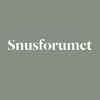Smoking in Norway
The overall smoking prevalence of daily smoking in Norway reduced significantly from 21% in 2008 to 11% in 2017 amongst adults aged 16-74. During that period the smoking prevalence for men reduced from 21% to 12%, and for women it went down from 21% to 10%. The most recent data show there were 6,207 annual deaths from tobacco-smoking related diseases (approximately 2,900 women and 3,300 men). The annual percentage of all deaths attributable to tobacco smoking was 14.94% (women: 13.6%; and men: 16.1%). Nicotine vapes (e-cigarettes) are legal in Norway. They can only be sold to those 18 and older and can be purchased without a prescription but there are legal restrictions on their use in public places. Heated tobacco products are banned in Norway but snus is allowed. Snus is regulated as a tobacco product. It can be imported for trade or personal use and it can also be bought online. A health warning is required on packaging, it can only be bought by those aged 18 and over, and there are no restrictions on flavour range. Nicotine replacement therapy (NRT) can be marketed and it is available to buy in many general shops without a prescription. The NRT market in Norway is worth €48.8 million. For further information and full references, click through to the detailed datasheets above.
Read articles from Norway
September 15, 2023 by sciencenorway.no
Study shows link between the tobacco product snus and cancer – researcher points out that the numbers are small
The risk of oesophageal cancer is more than three times higher, and the risk of pancreatic cancer is twice as high in snus users than in others, according to a new study reported by NRK recently (link in Norwegian). Snus is a powdered tobacco, which today usually comes in a small pouch which is stuffed under the upper lip. "What we see in the studies that we have is that these occurrences of cancer follow the digestive tract," physician and researcher Bendik Brinchmann tells NRK. "What we also see again and again is that the mortality of the cancer, if you get it and use snus, becomes higher," he adds.
August 08, 2023 by daily-pouch.com
Report Suggests Snus is Norway’s Best Smoking Cessation Aid
Norway has a smoking prevalence rate of 14%. Compared to the EU average of 23%, these figures are promising. It’s long been suggested that the availability of Snus is one of the big reasons for these relatively low smoking rates in Nordic countries. [...] Snus started to take off in Norway in the 1990s. These days, it’s a well-established product in the Norwegian market, and it’s used by about 25% of men and 10% of women.
April 12, 2023 by snusforumet.se
Online snus sales under threat in Norway
The Norwegian government wants to ban online snus sales as part of a new tobacco strategy. But experts warn the measure may be counterproductive for efforts to reduce smoking rates.
Norway’s new tobacco strategy was included in a sweeping public health report released on March 31.
“Our vision is a tobacco-free generation, and we want to make ensure children born in 2010 and later are given that opportunity,” said Norwegian health minister Ingvild Kjerkol in a statement.
March 22, 2023 by snusforumet.se
Norway spared from controversial ban on flavoured snus: report
A proposed ban on flavoured snus will not be among the measures included in the Norwegian government’s new tobacco strategy, according to media reports.
Norwegian health minister Ingvild Kjerkol is set to release a new public health report on March 31st that will include several proposals that would tighten tobacco regulation.
“If flavoured snus is banned, we risk seeing a rise in smoking prevalence again. And we don’t want that,” Karl Erik Lund of the Norwegian Institute of Public Health told the Verdens Gang (VG) newspaper in early March
October 07, 2022 by thelocal.no
Norway plans to limit the amount of tobacco you can bring into the country
Today’s duty-free and personal use tobacco quota amounts to 200 cigarettes or 250 grams of other tobacco products (e.g., snuff) and 200 sheets of cigarette paper.
The quota also includes liquid with nicotine for e-cigarettes and other nicotine products. [...] The government intends for the changes to be limited to the duty-free tobacco quota for personal use.
The Ministry of Finance expects the tightening to increase the state’s tax revenue by roughly 800 million kroner.
November 03, 2020 by vapingpost.com
Risk Perceptions of Snus and Cigarettes in a Snus-Prevalent Society
The vast majority of studies conducted in the U.S. conclude that perceptions of the relative harmfulness of SLT versus cigarettes amongst the public, are inconsistent with those derived from scientific research and typically confused with those of cigarettes. Conducted in Norway, where the use of snus is highly prevalent, the current study tested whether such inaccuracies existed also locally. The researchers compiled data over a period of 16 years (2003–2018), from 13,381 respondents (aged 16–79 years). The respondents answered questions about the risk perceptions in Norway’s nationally representative survey of tobacco behavior. [...]
August 22, 2018 by thetimes.co.uk
THE TIMES Letter to the Editor SMOKELESS SNUS
Gerry Stimson
Emeritus professor, Imperial College, London
July 13, 2018 by sciencedaily.com
The more you smoke, the greater your risk of a heart rhythm disorder
The study found a 14% increase in the risk of atrial fibrillation for every ten cigarettes smoked per day. There was a linear dose-response relationship, meaning that the risk increased with each additional cigarette smoked. "If you smoke, stop smoking and if you don't smoke, don't start," said study author Dr Dagfinn Aune, [...] "We found that smokers are at increased risk of atrial fibrillation, but the risk is reduced considerably in those who quit."
January 22, 2018 by reuters.com
Snus tobacco on the rise as Norway smoking halved in a decade
The share of Norwegians who smoke on a daily basis has halved in the last decade and was last year exceeded for the first time by the use of snus, a wet snuff tobacco product, Statistics Norway said on Thursday.
Among the adult population, 11 percent were daily smokers in 2017, a fall of one percentage point from the previous year and down from 22 percent in 2007 as authorities continue to campaign against the use of tobacco.
January 19, 2018 by malaymail.com
More Norwegians sniff at cigarettes, preferring snuff
More Norwegians use “snus” — a form of snuff particular to Nordic countries — instead of cigarettes for their nicotine fix, official figures showed for the first time yesterday. The preference for snus in Norway, is certain to revive debate over the health effects of the product, a moist powder tobacco that is popped under the lip. Though its sale is illegal across the EU, it is manufactured and used in Sweden, which has an exemption, and Norway, which is not an EU member.








